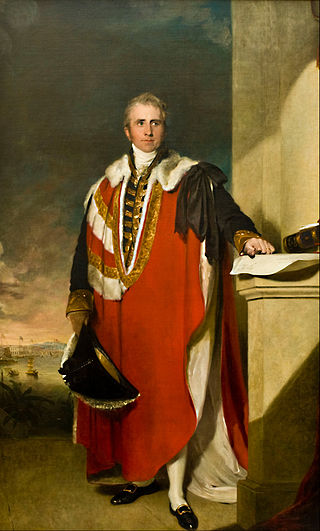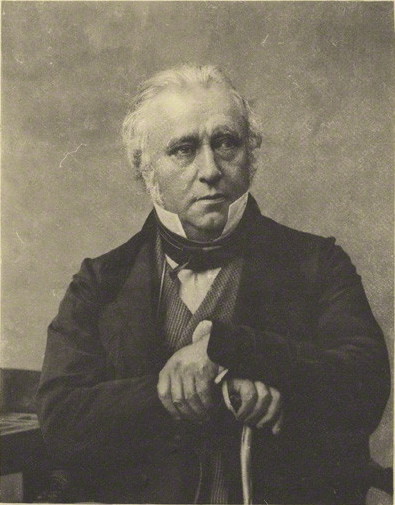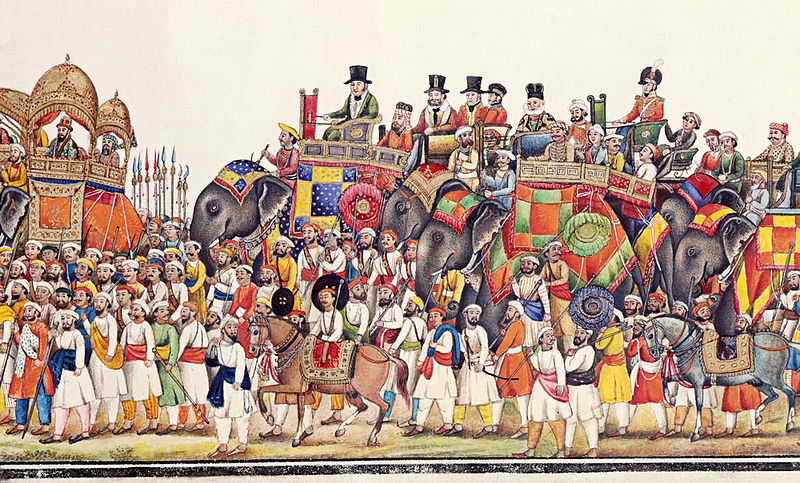The British were willing to exploit India at their full potential. For that, they needed a firm system of education policy from which they can create the clerical staff as per their need. So they initiated the process of developing an education system for Indians. With the arrival of Lord Hasting (1813-23) governor of Bengal, the nature & character of British activities in India underwent a fundamental change. The activities of East India Company were no longer a reaction to the prevailing circumstances the elements of planning & vision of an extensive British Indian Empire had started becoming visible in the activities of East India Company.
The wars & battles fought hereafter were not compelled by circumstances but the East India Company fought these wars to complete the map of the British Indian Empire. Their wars & battles were offensive & expansionist. Lord Hasting emphasized the idea of British paramount he demanded the recognition of East India Company of sovereign power. Lord Hasting refused to meet Mughal Emperor Akbar II without the terms of equality.
First meeting with Mughal Emperor on equal terms

In 1827, Lord Amherst (1823-28) became the 1st Governor General to meet Mughal Emperor on equal terms. Till this time the Governor-General used to address himself as a loyal servant to the Mughal Emperor even though the East India Company was much more powerful than the Mughal Emperor. In 1835, the race of the Mughal Emperor was removed from coins issued by East India Company it was replaced by the face of the British crown.
The East India Company fought several offensive wars & battles to complete the conquest of India. In 1816, a war was fought against Gorkha of Nepal. In 1816-17, the 3rd Anglo-Maratha war was fought, the Peshwaship was abolished & the Maratha were effectively subjugated to East India Company. In 1831, Mysore was annexed by Governor-General William Bentinck on the charges of poor governance.
1st Anglo-Afghan war was fought by Lord Auckland during (1839-42). This process of the expansion of the British Indian Empire was carried to its climax by Lord Dalhousie (1848-56). He was the greatest imperialist in the history of British Rule in India he used every possible method.
Within a short period of 8 years, the British Indian Empire was almost doubled by the expansionist policy & Dalhousie. The Governor-General before Dalhousie followed the approach of annexing only those native stats which could not be left out due to the needs of British security. Dalhousie reversed this policy he tried to annex the maximum possible number of native states. He left out only those native states which he could not annex on any ground.
Progress of Education
During the period of British Rule, a new education policy was adopted by the British to serve their colonial needs. Initially, this was promoted by the company’s official in their private capacity & later on the government of the company took steps towards the promotion of education in India. After winning the battle of Plassey & the battle of buxar, the company had emerged as imparted political power. But for almost 50 years (1765-1813) company as an organization didn’t take any step for the promotion of learning. The company was busy exploiting Indian resources; it wasn’t concerned about the welfare & progress of Indians.
In 1781, Governor-General W. Hastings established Calcutta and Madras. In 1791, Sanskrit College was set up at Banaras by Jonathan Danken, the company’s resident at Banaras. This institution not for the spread of learning among Indians, but these were established to teach Indian language & literature to the company’s European officials. Calcutta Madarsa was established to impart knowledge of the Persian & Arabic language to the company’s officials. Sanskrit college was set up to impart learning of Indian language, laws, literature & religion.
Formulation of Education Policy

For the 1st time in 1813, the company was asked to keep aside a sum of Rupaiya of 1 lac/annum for the promotion of learning in India by the British. This sum was not spent for 20 years because there was no unanimity among companies officials about the syllabi & medium of instruction. In 1813, Governor-General Lord W. Bentick set up a committee known as the company on public instruction under the chairmanship of Lord T.B Macaulay to advise the government about the syllabi and medium of instruction. This committee was having 10 members.
Members of the company on public construction are divided into 2 groups known as the anglesite & orientalist. Both of these groups were having a strength of 5 members. The anglesite group led by Charles Trevelyan was in favor of imparting western learning in the English medium. The orientalist group led by H.T Princep was in favor of imparting traditional Indian learning in vernacular medium.
Since both, the group were having equal strength, a serious anglesite orientalist controversy developed. Lord Macaulay, chairman of the company was in favor of promoting western education. He supported the anglesite group on 2nd Feb 1835, Macaulay Company submitted its recommendation to Governor-General. This scheme suggested by Macaulay was presented in form of a report known as Machaley minute.
The report of the Macaulay committee was discussed by Governor-General in council & on 7th March 1835, an education resolution was adopted which formulated the company’s education policy. This policy declared that western education shall be promoted in the vernacular medium at the primary level & English medium at a higher level. The principle of downward filtration was adopted as a guide to the downward promotion of education. It was decided that western education should be imparted to a small section of people living at top of the pyramid & gradually western knowledge will automatically percolate downwards.
Aims and objective behind Education Policy
British Education Policy was guided & inspired by British colonial interest. Macaulay committee recommended the promotion of western learning in India, so that market of western goods, could be expanded. Lord Macaulay had himself commented that the main aim of the company’s Education Policy was to create a class of Indians that would be Indian in blood and color but European in the test. Western-educated Indian was expected to prefer western goods.
Another object behind the spread of western learning was to habituate Indians in the western way of thinking and to the western institution. Macaulay had emphasized that western education would help in strengthening the foundation of the European institution in India. And the result of that British interest in India would remain the same even after the end of British Rule. A class of educated Indian (English) was required to communicate with the Native State. Also to fill the lower administrative position because it was practically impossible to appoint European everywhere. The European Employee was far more costly than an Indian counterpart.
Impact of British Education Policy
British Education Policy was aimed at safeguarding & promoting British interest but unconsciously & unintentionally spread of western education in India resulted in the growth of awakening. Indians came into contact with the liberal & progressive ideas of the west through western education. The ideas of the enlightenment were adopted by Indian intelligentsia. As a result of which Indians could see exploitation & suffering being carried out by British colonial rulers. This realization played an important role in the growth of the nationalist awakening & India’s struggle against British Rule commenced.

